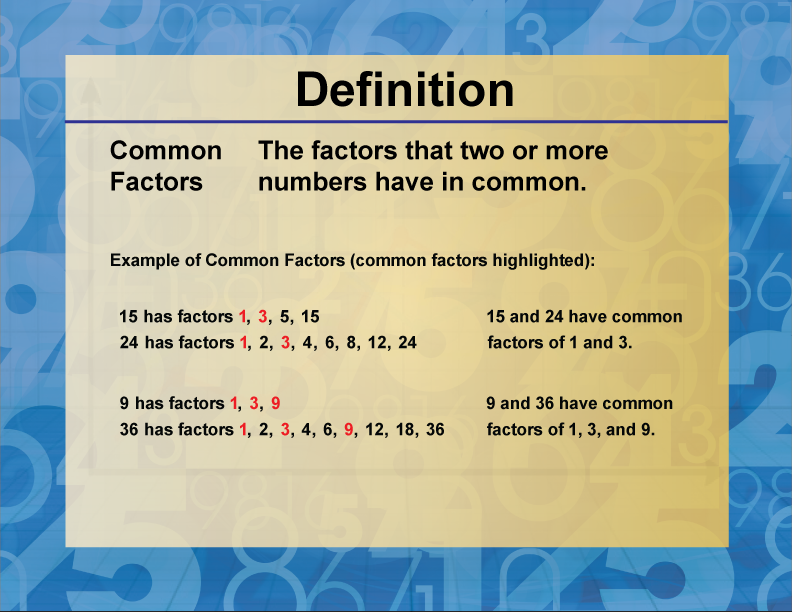
Display Title
Definition--Factors and Multiples--Common Factors
Display Title
Common Factors

Topic
Factors and Multiples
Definition
A common factor is a number that divides two or more numbers exactly without leaving a remainder.
Description
Common factors are integral to understanding the mathematical concepts of factors and multiples. They are the numbers that can divide two or more given numbers without leaving a remainder. For example, if you consider the numbers 12 and 18, their common factors are 1, 2, 3, and 6. This is because these numbers can divide both 12 and 18 exactly, with no remainder.
Common factors play a crucial role in simplifying fractions, finding the greatest common divisor (GCD), and solving problems that involve ratios and proportions. For instance, when simplifying the fraction 18/24, you would use the greatest common factor of 18 and 24, which is 6, to reduce the fraction to its simplest form, 3/4. This process is essential in various mathematical applications, including algebra and number theory.
Understanding common factors also helps in solving real-world problems, such as optimizing resources and dividing items into equal parts. For example, if you need to divide 24 apples and 36 oranges into the largest possible equal groups, you would find the greatest common factor of 24 and 36, which is 12, to determine that each group can have 12 apples and 12 oranges.
For a complete collection of terms related to factors and multiples click on this link: Factors and Multiples Collection.
| Common Core Standards | CCSS.MATH.CONTENT.3.OA.B.6, CCSS.MATH.CONTENT.4.OA.B.4, CCSS.MATH.CONTENT.6.NS.B.4, CCSS.MATH.CONTENT.HSA.SSE.A.1, CCSS.MATH.CONTENT.3.NBT.A.3, CCSS.MATH.CONTENT.4.NF.B.4.A |
|---|---|
| Grade Range | 3 - 8 |
| Curriculum Nodes |
Algebra • The Language of Math • Numerical Expressions |
| Copyright Year | 2021 |
| Keywords | multiples, factors, definitions, glossary term, factor, Common Factor |